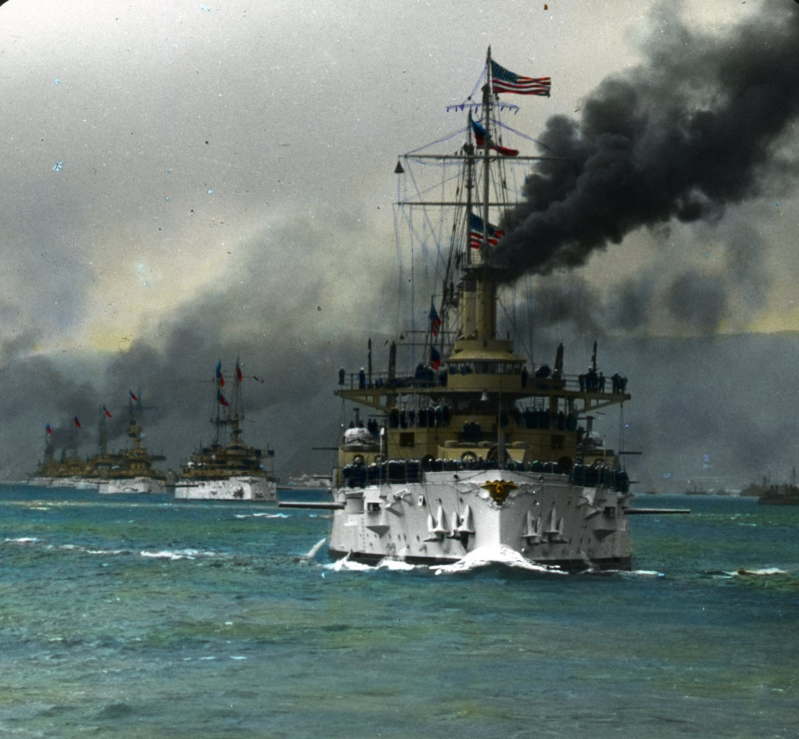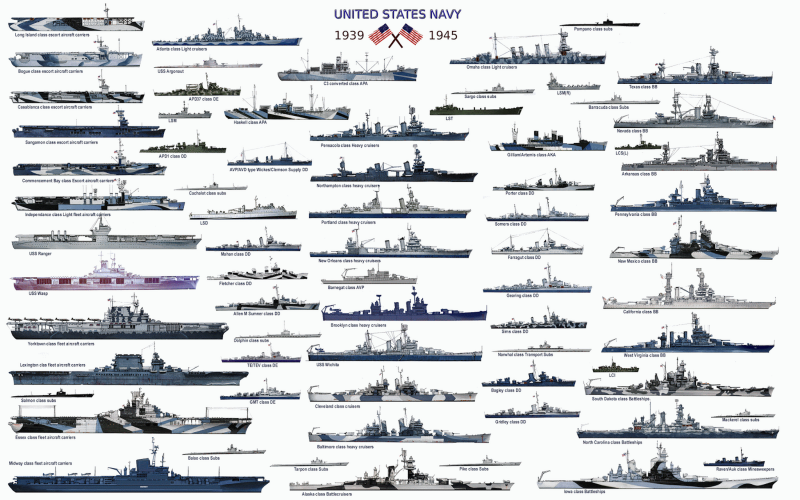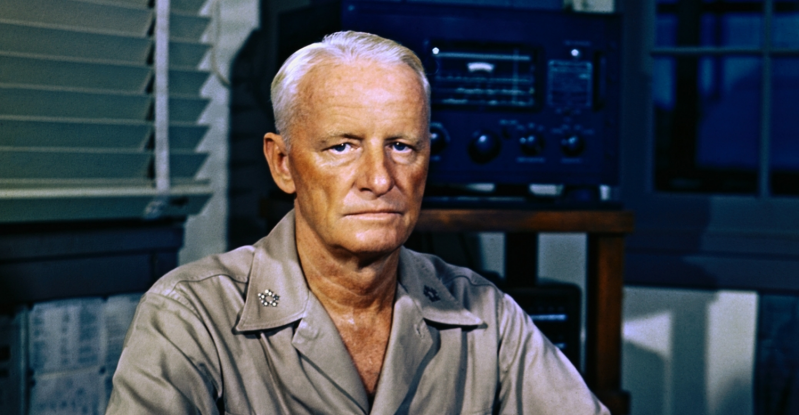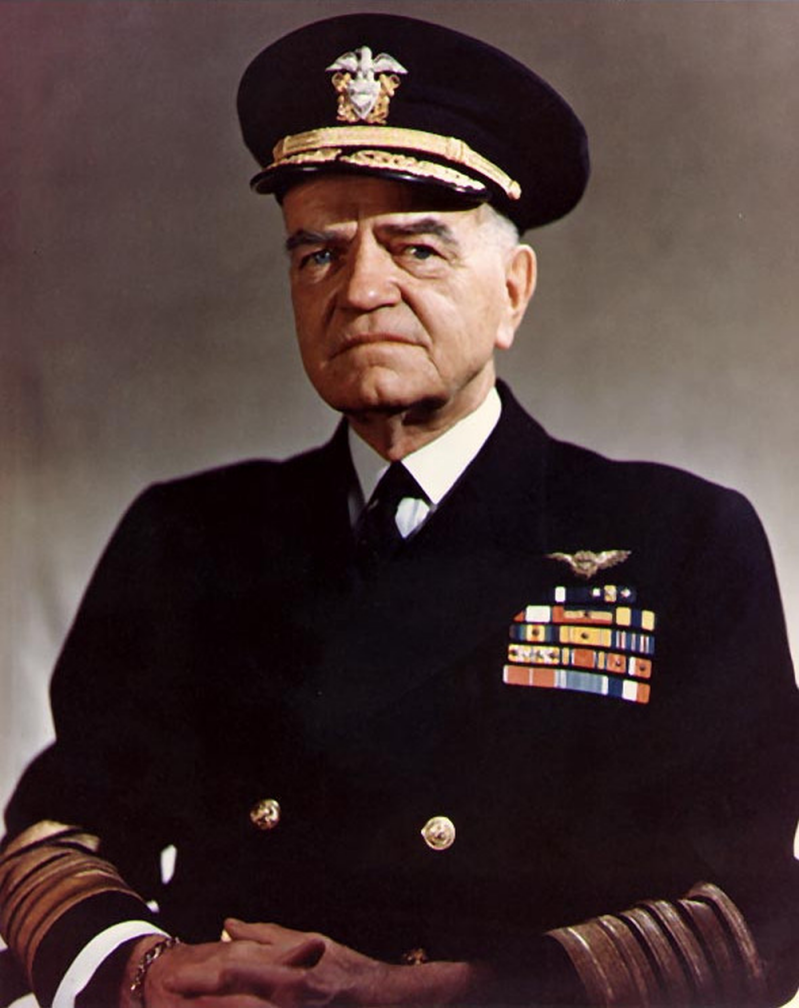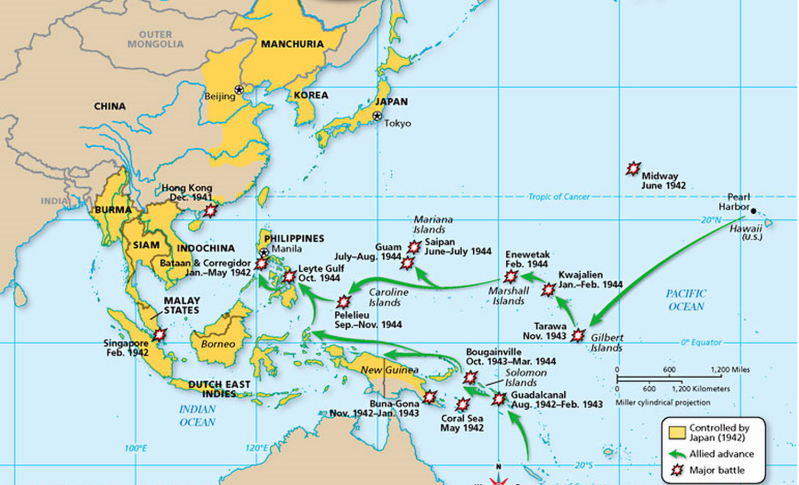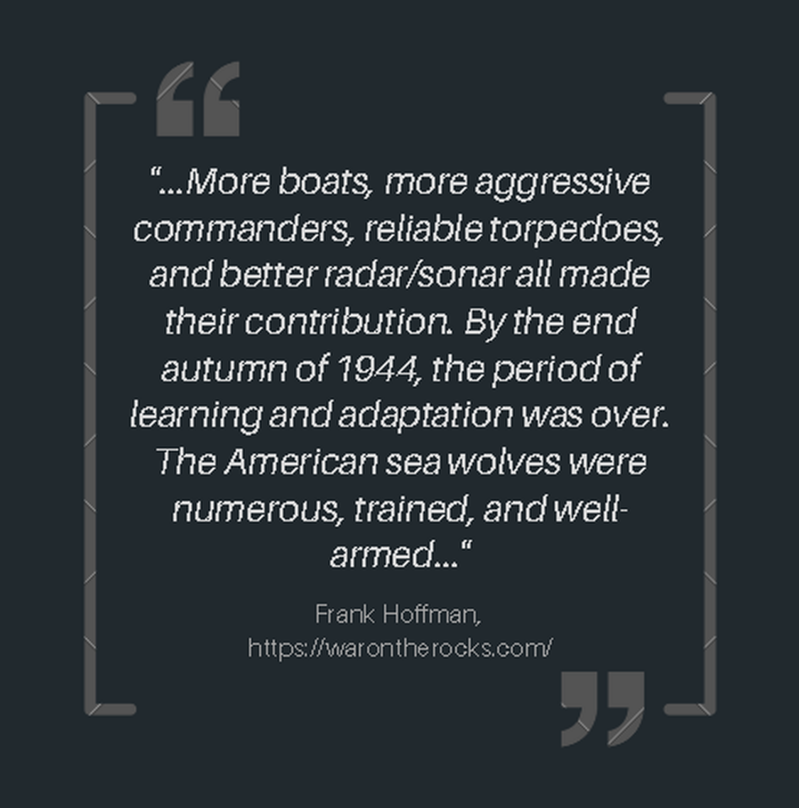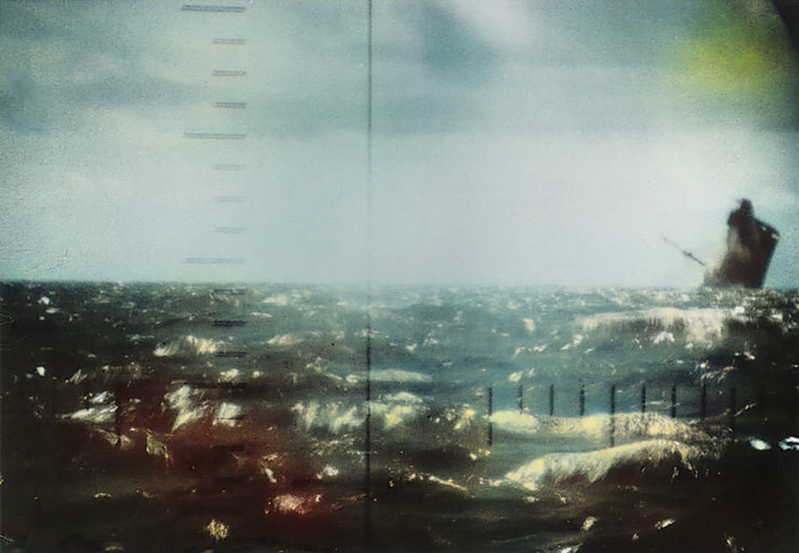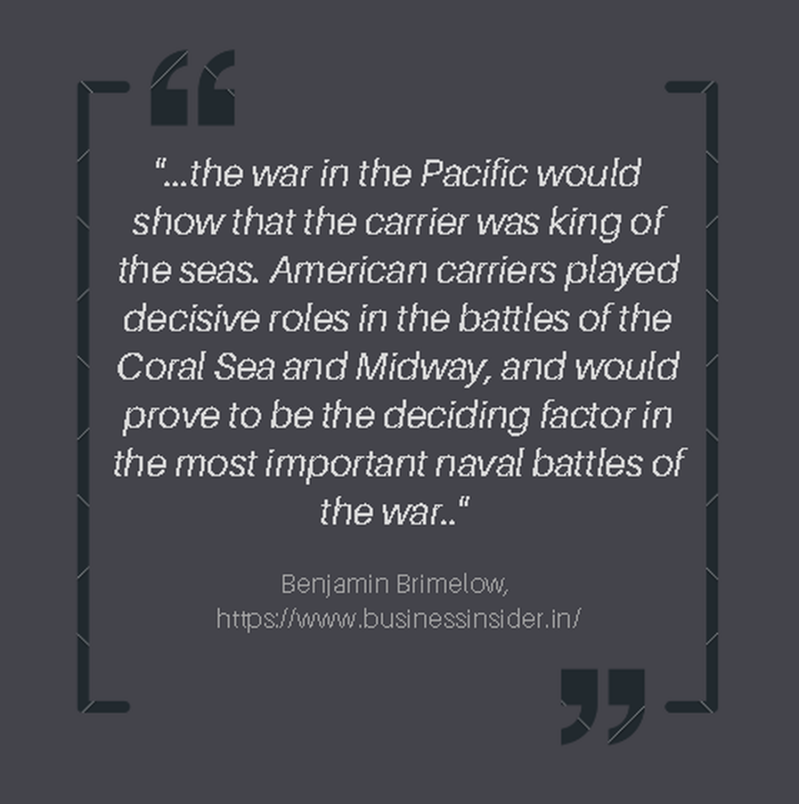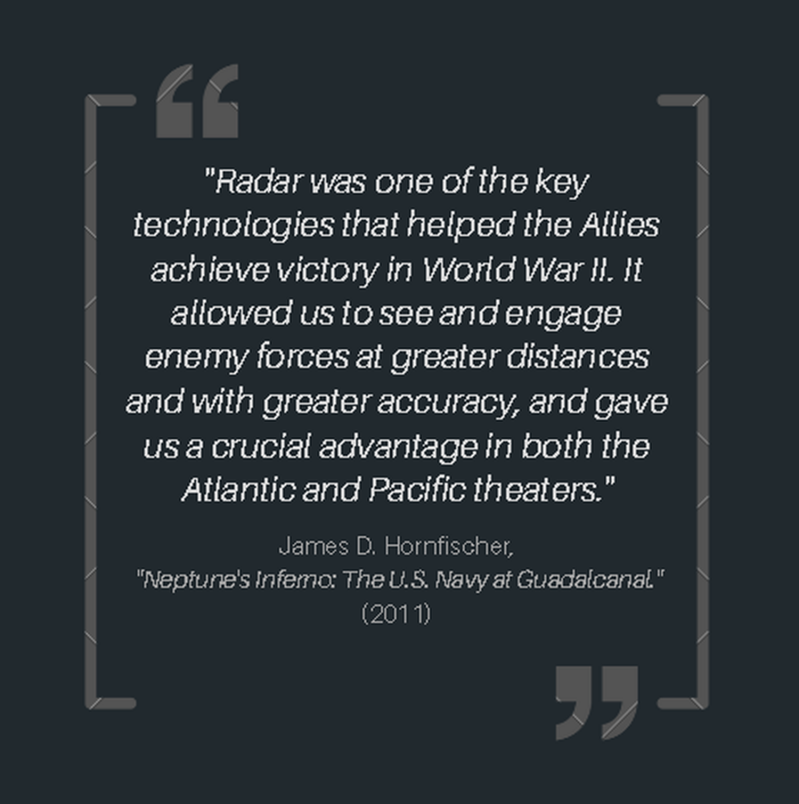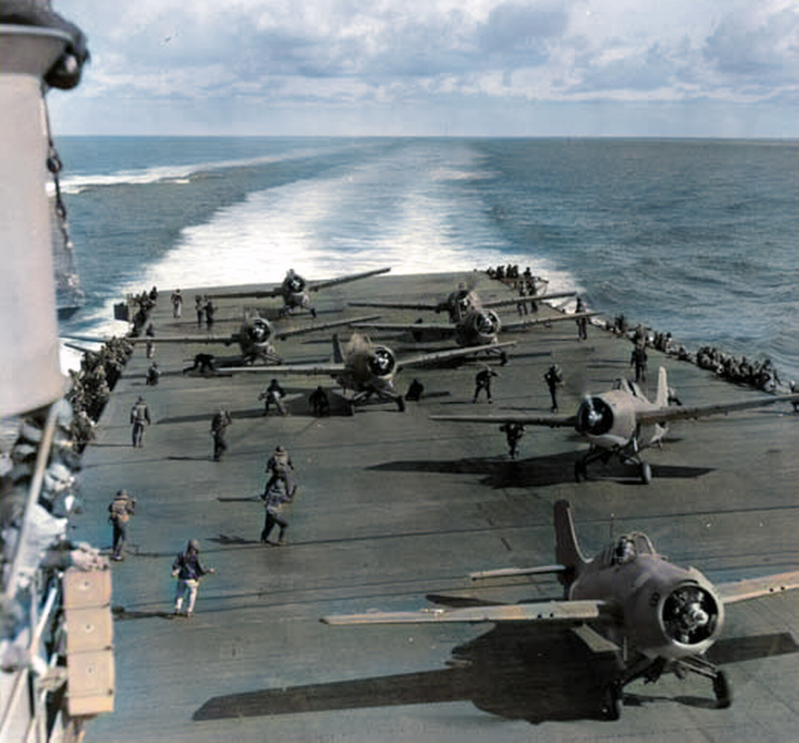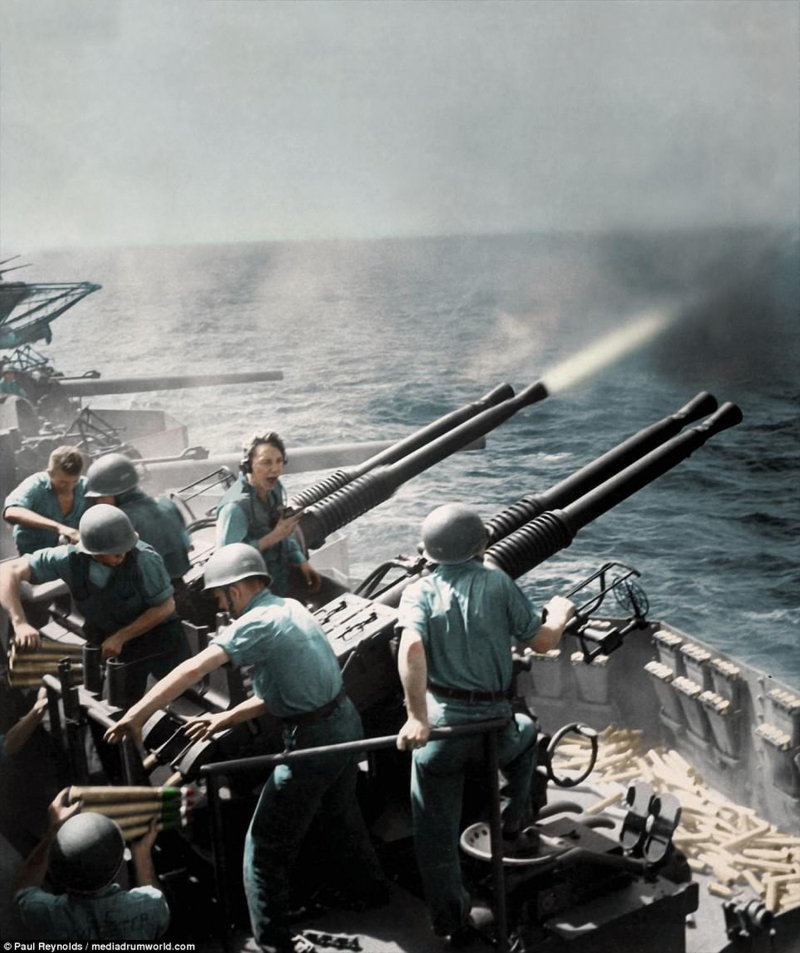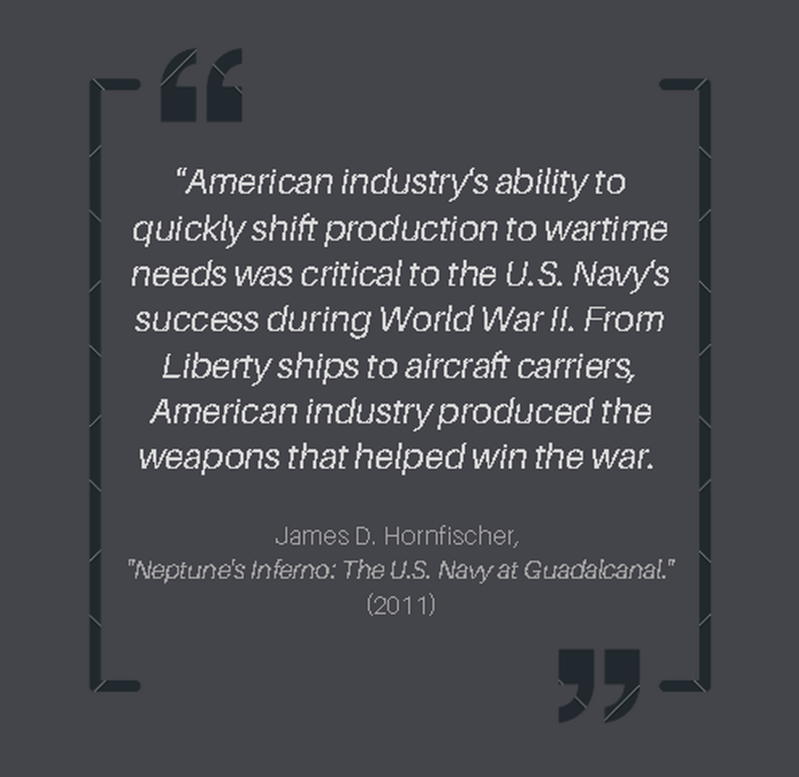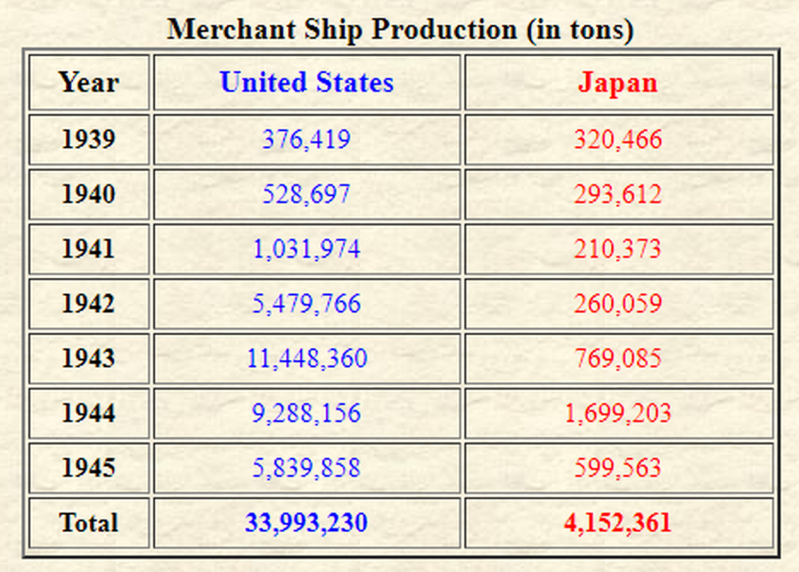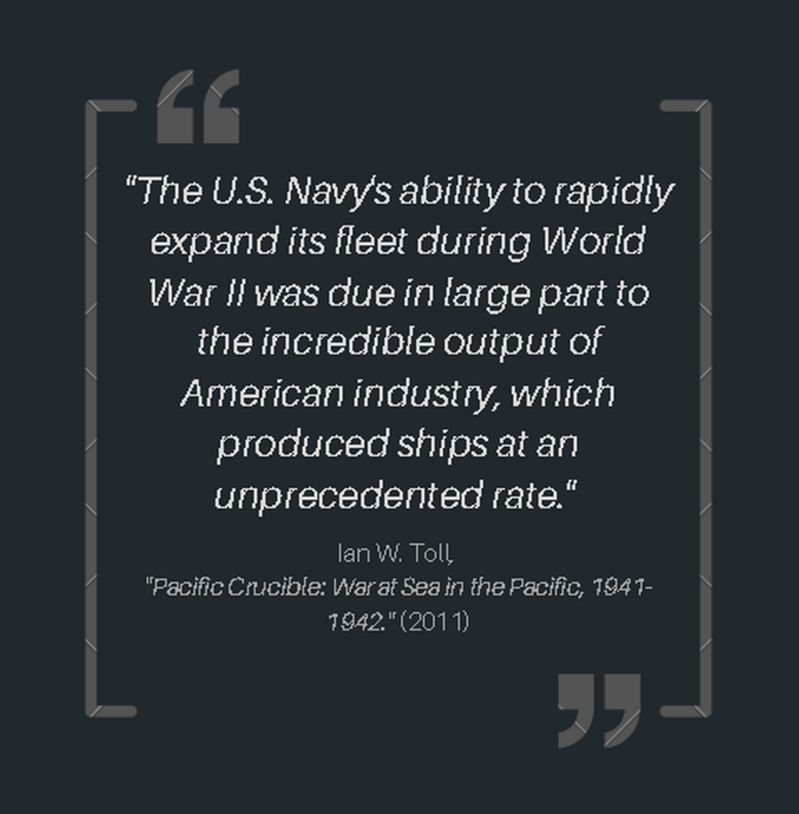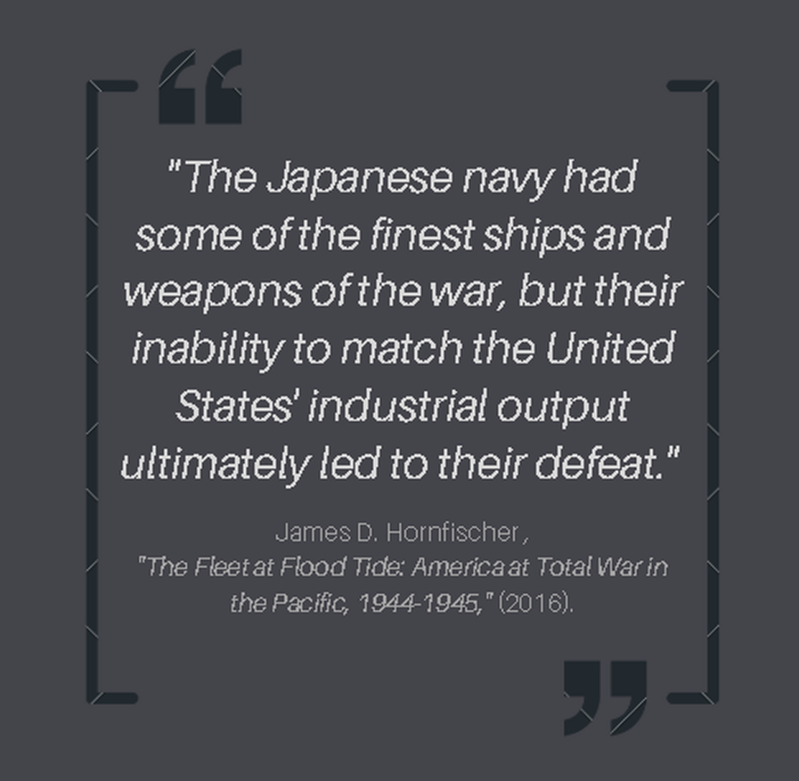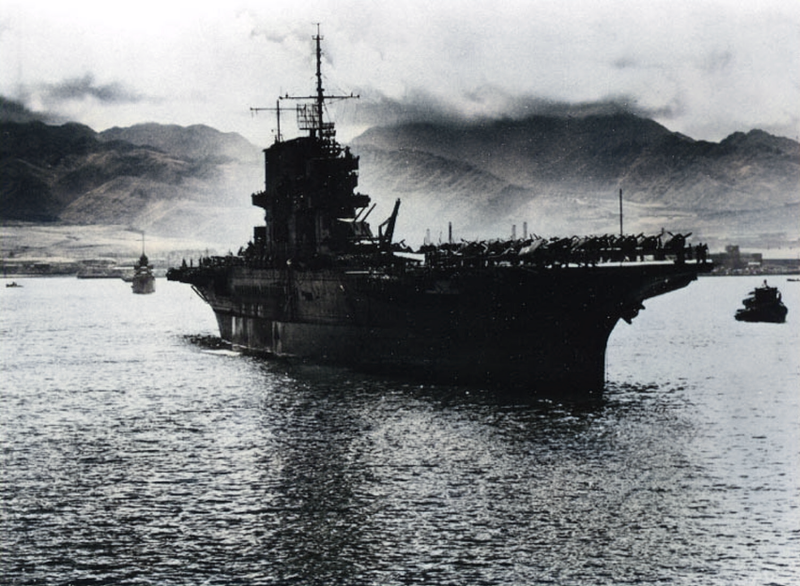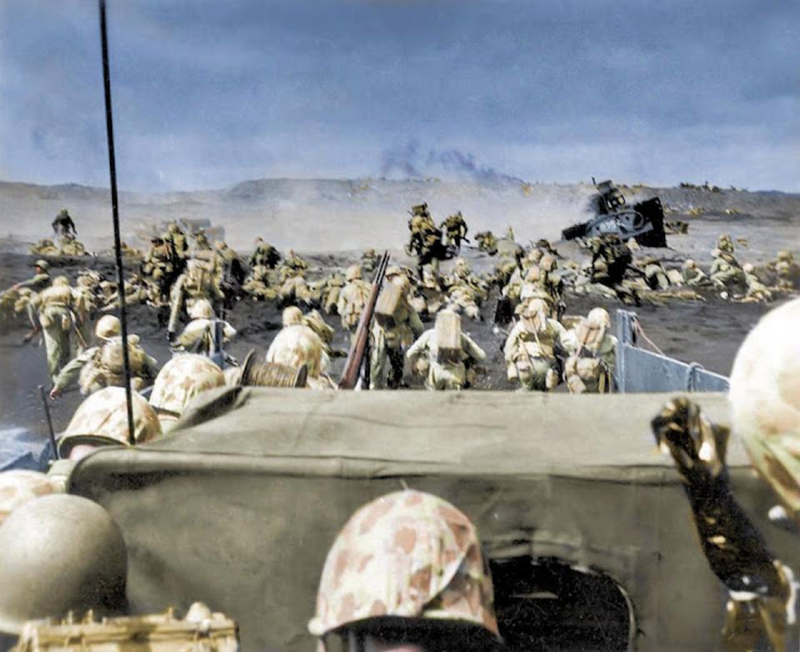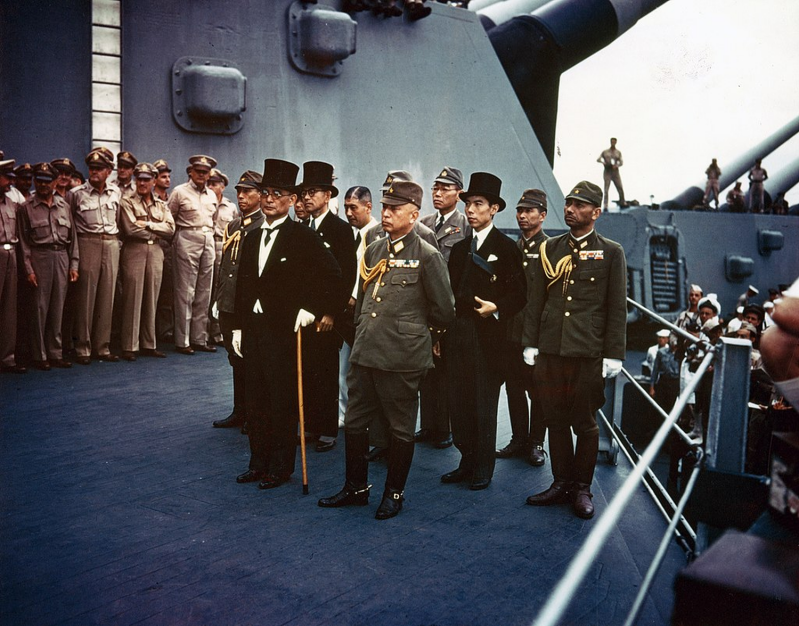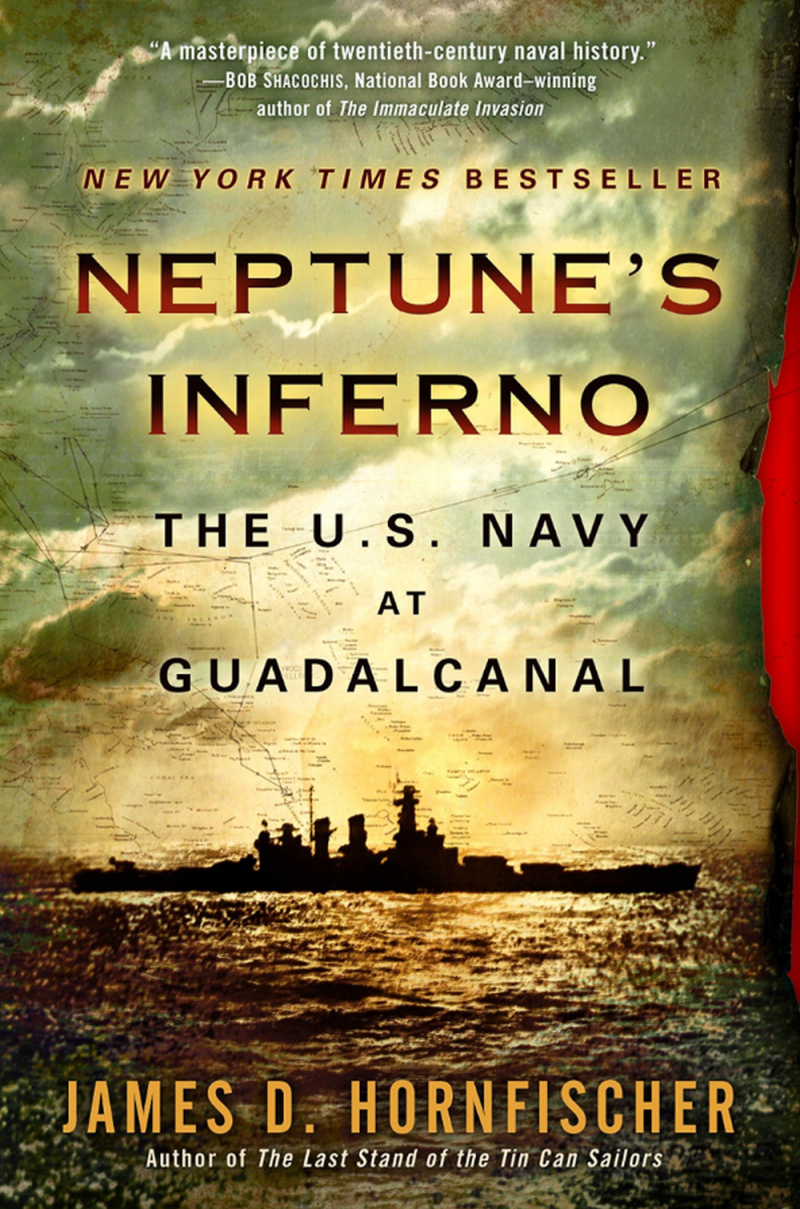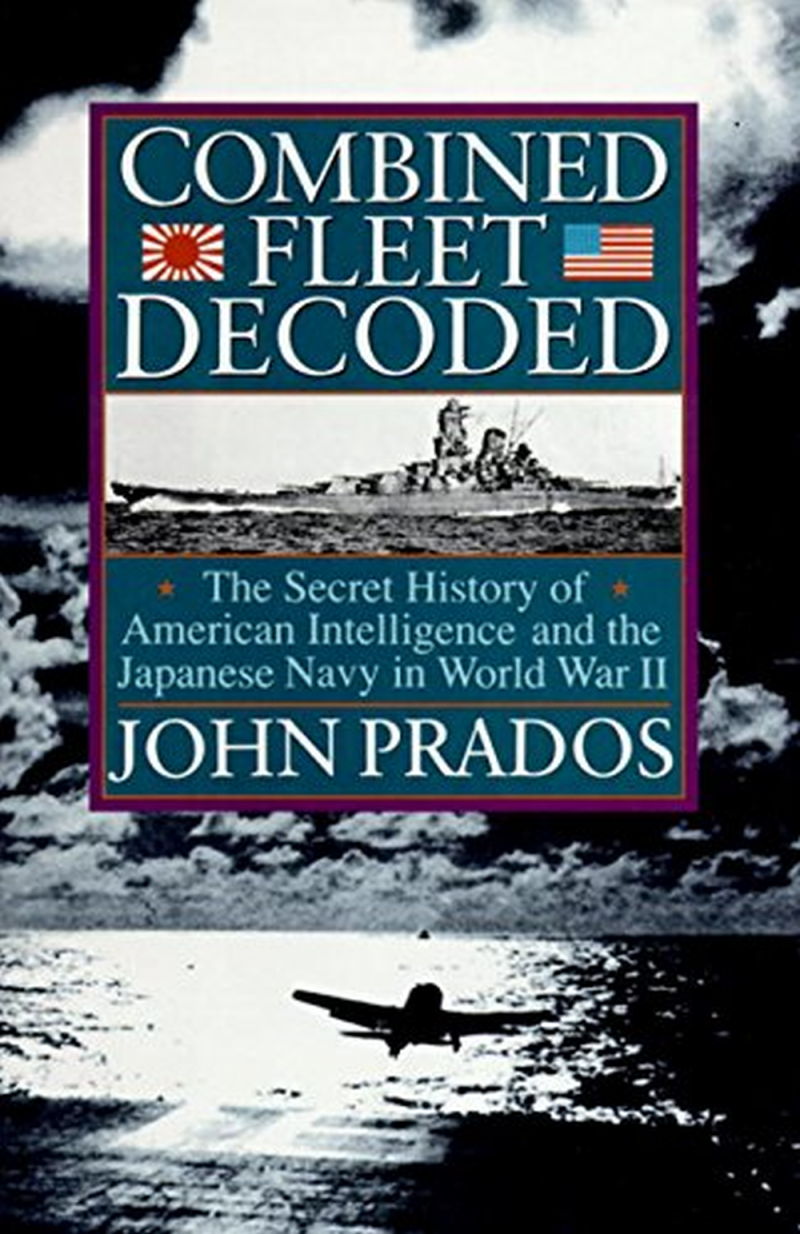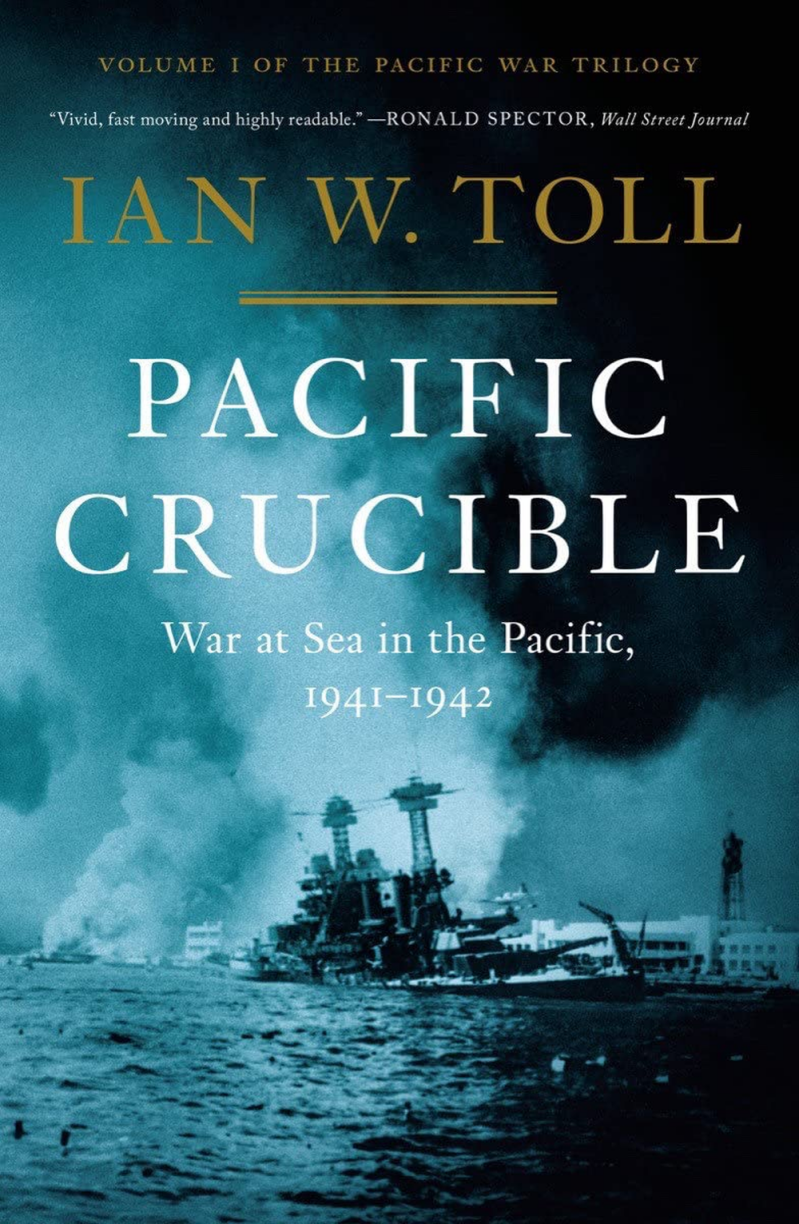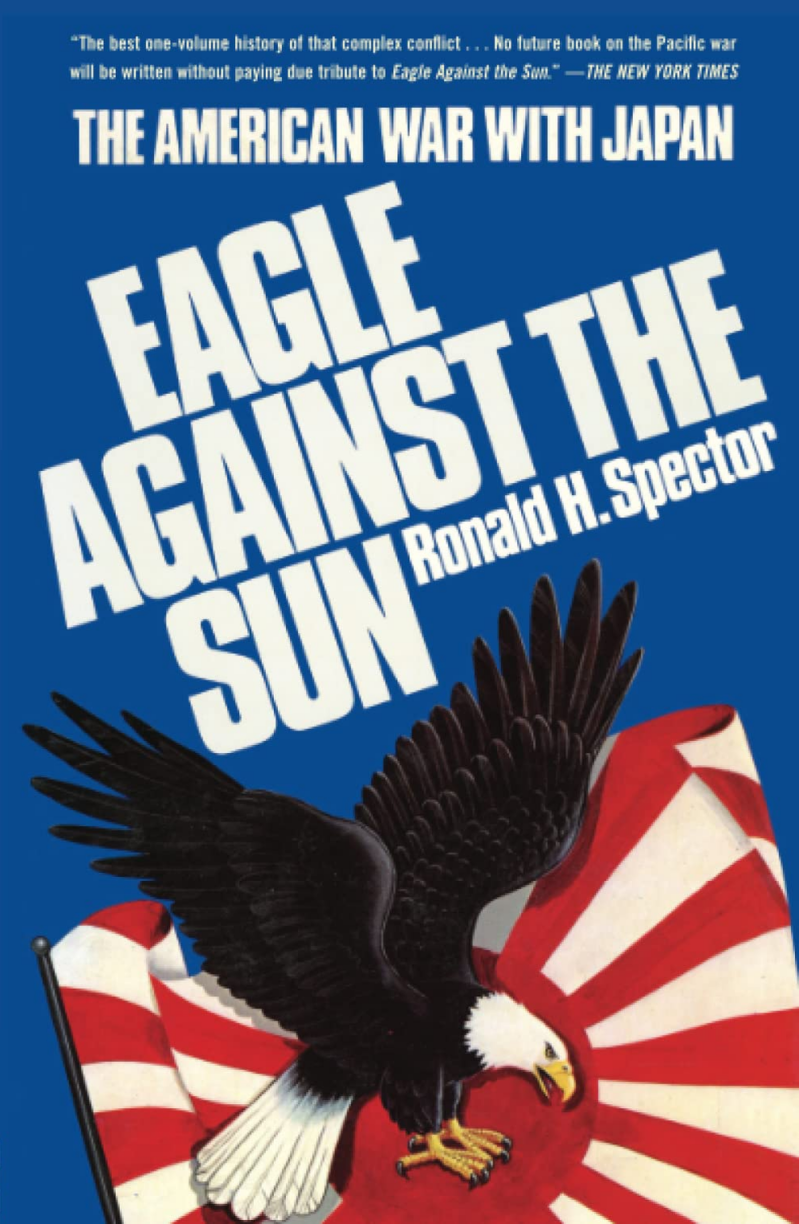The Mighty Blue Fleet
From fledgling fleet to great naval power.
In the early 1800s, the navy was relatively small and was primarily used to defend against pirates and to protect American commerce. However, during the War of 1812, the navy played a crucial role in defeating the British and establishing the United States as a naval power.
After the War of 1812, the navy continued to expand, with the construction of larger and more technologically advanced ships. In 1842, the US Naval Academy was established in Annapolis, Maryland, to train officers for the expanding fleet. During the Civil War, the navy played a significant role in blockading Confederate ports and supporting Union land operations. The Union's victory in the war established the United States as the dominant naval power in the Western Hemisphere.
The late 1800s saw further expansion of the navy, with the construction of steel-hulled battleships and the acquisition of new territories, including Hawaii and Puerto Rico. The Spanish-American War in 1898 saw the navy play a critical role in the defeat of the Spanish fleet and the acquisition of the Philippines, Guam, and Puerto Rico.
The Great White Fleet of the US Navy, a battle fleet that completed a journey around the globe from 16th December 1907 to 22nd February 1909.
During the First World War, the US Navy played a significant role in escorting convoys and protecting American merchant ships from German U-boats in the Atlantic. The navy also contributed to the Allied victory with the use of its battleships in the North Sea.
By the end of the conflict, the United States Navy had nearly 500,000 officers and enlisted men and women, making it the largest in the world in terms of personnel. Following a brief period of demobilisation, the world's major naval powers began programs to increase the size and number of their capital ships. The US President, Woodrow Wilson, proposed a world-leading fleet of US capital ships, which in turn sparked a Japanese counter-program and a British plan to build enough ships to maintain a navy superior to either.
Washington Naval Conference
The Washington Naval Conference was a diplomatic meeting held in 1921-1922 between major world powers, including the US, UK, and Japan, aimed at reducing naval arms race and promoting disarmament.
The conference had a significant impact on US naval policy by promoting disarmament and limiting the arms race. The resulting Five-Power Treaty set limits on naval tonnage and established ratios of shipbuilding between major powers, which helped to reduce the size of the US Navy. With 525,000 tonnes of capital ships and 135,000 tonnes of aircraft carriers, the pact recognised the US Navy as equal to the Royal Navy, with the Japanese as the third power.
US Navy kit inspection at the Great Lakes, 1930's.
Additionally, the Four-Power Treaty and the Nine-Power Treaty helped to establish the US as a major player in international diplomacy and peacekeeping efforts.
The conference also influenced the development of new naval strategies and technologies, such as the emphasis on aircraft carriers and naval aviation, which would become increasingly important in future conflicts.
Rearmament
One of the key figures in the U.S. Navy's approach to this period was Admiral William V. Pratt.
Pratt was an advocate of naval power and believed that the U.S. needed to have a strong navy in order to protect its interests overseas.
He was also a proponent of air power and believed that aircraft carriers would play a critical role in future naval warfare.
Another important figure during this period was President Franklin D. Roosevelt. Roosevelt recognized the importance of naval power and worked to secure funding for the construction of new ships, particularly aircraft carriers.
He also sought to modernize the U.S. Navy's fleet, investing in new technology such as radar and sonar.
The USS Carolina, launched in 1937, the first modern battleship constructed since 1921.
The U.S. Navy's approach to this period was also influenced by the rise of fascism in Europe. Many in the U.S. Navy recognized the threat that Germany posed to the global balance of power and believed that a strong navy was necessary to counter this threat. American naval planners also recognized Japan's naval power and expansionist ambitions, which posed a direct challenge to US influence and control in the region.
The US Navy's assessment of the Japanese threat was reinforced by the Japanese attack on China in 1937, which demonstrated Japan's willingness to use military force to achieve its objectives.
As a result, the US Navy sought to bolster its presence in the Pacific and implement a strategy of containment to counter Japanese aggression, ultimately leading to the United States' entry into the Second World War after the attack on Pearl Harbor.
This approach ultimately helped to position the U.S. Navy as one of the most powerful and advanced naval forces in the world by the time of The Second World War..
The Naval Act of 1936 authorised the construction of the first modern battleship since 1921, and the USS North Carolina was launched in October 1937. The Second Vinson Act authorised a 20% increase in the strength of the Navy, and the Two-Ocean Navy Act authorised an 11% increase in the Navy in June 1940.
Chief of Naval Operations Harold Rainsford Stark requested another 70% increase, totalling to almost 200 extra ships, which Congress approved in less than a month.
By the start of the Second World War, the US navy had reached a considerable size.
Key personalities
The key US naval commanders during The Second World War played critical roles in the success of the Allied forces. Their leadership, strategic planning, and tactical skill were essential in defeating the Axis powers and shaping the post-war world.
Fleet Admiral Ernest J. King - Commander in Chief, US Fleet and Chief of Naval Operations
As the highest-ranking officer in the US Navy during The Second World War, Admiral King was responsible for overseeing all US naval forces.
He was a key player in developing the strategy for the Pacific War and played a critical role in the development of amphibious warfare doctrine. He was instrumental in the Allied victory in the Pacific.
Admiral Chester W. Nimitz - Commander in Chief, US Pacific Fleet
Admiral Nimitz was responsible for overseeing the US naval forces in the Pacific, including the decisive Battle of Midway.
He played a critical role in the Allied victory in the Pacific theater and was instrumental in the development of the island-hopping strategy that eventually led to the defeat of Japan.
Fleet Admiral Ernest J. King was responsible for overseeing all US Naval forces during the war.
Fleet Admiral Ernest Joseph King - Famous Naval Leaders - World of Warships official forum
Admiral Chester W. Nimitz, oversaw the US naval forces in the Pacific.
Admiral William F. Halsey led the US Third Fleet.
Admiral William F. Halsey - Commander, US Third Fleet
Admiral Halsey was a highly respected and aggressive naval commander who played a crucial role in the US victory in the Pacific. He led the US Third Fleet in the decisive Battle of Leyte Gulf and was responsible for liberating the Philippines from Japanese occupation.
Admiral Raymond A. Spruance - Commander, US Fifth Fleet
Admiral Spruance played a critical role in the Allied victory in the Pacific. He was responsible for overseeing the US naval forces during the Battle of Midway and the Marianas campaign, which were both critical turning points in the war.
He was also responsible for the capture of Iwo Jima and Okinawa.
Admiral Thomas C. Kinkaid - Commander, US Seventh Fleet
Admiral Kinkaid played a critical role in the Allied victory in the Pacific, particularly during the Battle of Leyte Gulf. He was responsible for leading the US Seventh Fleet in the liberation of the Philippines and was instrumental in securing the US victory in the Pacific theatre.
Island Hopping
The US Navy's doctrine was centred around the concept of "island hopping" in the Pacific. This strategy involved capturing and securing strategically important islands while bypassing others in order to gradually move closer to Japan.
The goal was to establish air and naval bases within striking distance of the Japanese mainland while avoiding costly direct assaults on heavily fortified positions.
The US Navy relied heavily on aircraft carriers and other naval aviation assets to support this strategy. Carrier-based aircraft provided air support for amphibious landings and engaged Japanese aircraft and naval vessels in the open sea.
The use of carrier-based air power allowed the US to strike deep into enemy territory, disrupting Japanese supply lines and causing significant damage to their war effort.
A US Navy Douglas SBD-3 Dauntless over USS Enterprise (CV-6), foreground, and USS Saratoga (CV-3) near Guadalcanal, 19th December 1942.
How the Navy's most important ships avoided destruction at Pearl Harbor | Business Insider India
Island hopping: From 1942, Allied forces in the Pacific - with the US Navy playing a major role - methodically whittled down Japanese possessions in the Pacific in a series of engagements.
トップ 100 Island Hopping Ww2 - マシアフテナン (masyallahtenan.blogspot.com)
One notable example of was the Battle of Guadalcanal in 1942-1943. The US Navy was able to secure the island of Guadalcanal and establish a key airfield, which allowed them to launch air attacks against Japanese positions throughout the region.
The campaign was marked by intense naval battles and saw the loss of several US ships, but ultimately resulted in a strategic victory for the US.
Another key aspect of the US Navy's doctrine during the Second World War was the use of submarines for both offensive and defensive purposes. US submarines were used to disrupt Japanese shipping lanes, sink enemy vessels, and conduct reconnaissance missions. They also played a key role in defending US naval convoys from Japanese attacks.
A sinking Japanese ship photographed through the periscope of USS Seawolf in 1942.
The American Submarine Campaign in the Pacific Changed the Tides of WWII (historycollection.com)
The Carrier Doctrine
The US Navy's carrier doctrine during The Second World War was a crucial component of their success in the Pacific Theatre. The carrier doctrine focused on the use of aircraft carriers as the primary offensive weapon in naval warfare, recognizing the importance of airpower in modern warfare.
The doctrine was developed in response to the growing threat of Japanese naval forces in the Pacific. The US Navy recognized that the Japanese had a significant advantage in terms of surface ships and decided to focus on aircraft carriers as their primary means of attacking the Japanese Navy
The USS Enterprise played a critical role in the Pacific War as a part of the US Navy's Pacific Fleet, participating in numerous battles, including the Battle of Midway, the Guadalcanal Campaign, and the Battle of the Philippine Sea. Its aircraft played a pivotal role in delivering airstrikes against enemy targets, contributing to the eventual Allied victory in the Pacific.
The carrier doctrine emphasized the use of carrier task forces, which consisted of multiple carriers, escort ships, and support vessels.
These task forces would operate together, allowing them to launch coordinated attacks on Japanese forces.
The doctrine also emphasized the importance of mobility and flexibility. Carrier task forces were designed to be able to move quickly and change course as needed, allowing them to respond to changes in the battlefield quickly.
The carrier doctrine was put to the test in several key battles during the war, including the Battle of Midway and the Battle of the Coral Sea. In both battles, carrier task forces played a critical role in the Allied victory, allowing the US Navy to project power across the Pacific and bring the fight to the Japanese home islands.
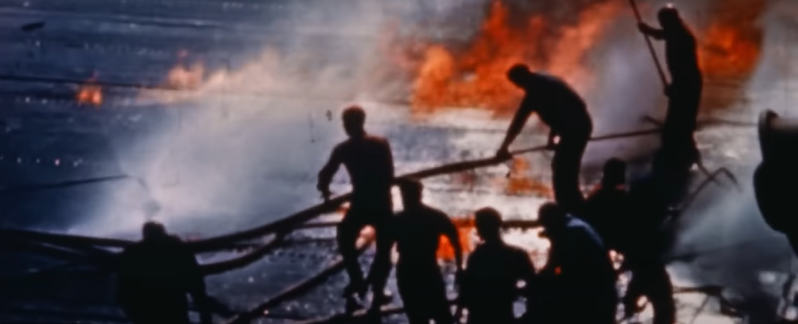
The Battle of the Coral Sea: US Sailors struggle to put out the flames on the deck of a carrier after Japanese air attack.
Why the Battle of the Coral Sea Was Unique in Naval History - YouTube
Innovations
The US Navy's tactics during the Second World War implemented a variety of innovations, such as radar and sonar, that helped to detect and track enemy ships and submarines.
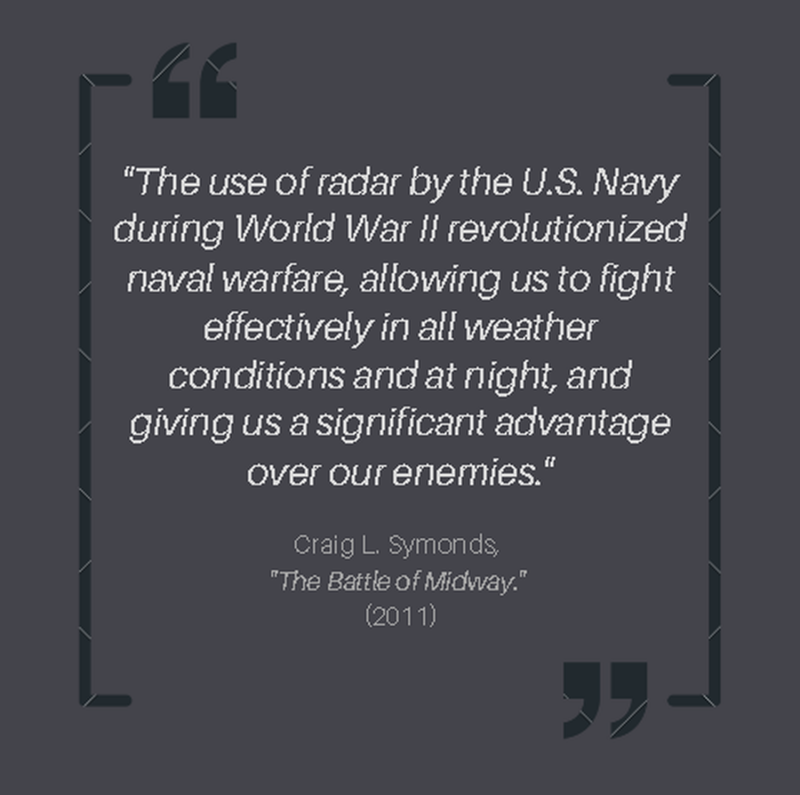
They were also at the forefront of developing new technologies, such as the landing craft, that were critical to the success of amphibious operations in Europe and the Pacific theatres.
Before the war, radar technology was still in its infancy, but the Navy recognized its potential and began investing heavily in its development.
The first radar system was installed on the USS Texas in 1939, and by the end of the war, radar had become an essential component of naval operations.
The USS Texas, a New York Class battleship - pictured here on Convoy duty in the North Atlantic in 1942 - was the first US ship to receive shipborne radar, the 385 MHz CXZ, in 1939.
Life Magazine
Radar allowed the Navy to detect enemy aircraft and ships from far away, even in poor visibility conditions such as at night or during bad weather.
This gave them a significant tactical advantage as they could launch surprise attacks on enemy ships and planes before they were detected.
It also helped the Navy to defend against enemy attacks, allowing them to intercept incoming planes and direct their own planes to the best possible attack positions.
Perhaps the most significant use of radar technology by the Navy was during the Battle of Midway in 1942. The Navy was able to use radar to detect incoming Japanese planes and direct their own planes to intercept them, resulting in a significant victory for the US Navy.
Grumman F4F 3 Wildcats VF on the USS Hornet during the Battle of Midway, June, 1942.
Liberty or Death: The USS Enterprise: 1775-2012 (Part 2) (todaylibertyordeath.blogspot.com)
Tactics
One of the most significant tactics employed by the US Navy was the use of carrier task forces. These task forces consisted of multiple aircraft carriers, escort ships, and support vessels, allowing the Navy to launch coordinated attacks on enemy forces. The use of carrier task forces was particularly effective in the Pacific Theatre, where the Navy was able to project power across the vast distances of the Pacific and strike at Japanese forces throughout the region.
The US Navy also made extensive use of amphibious warfare tactics, which involved the use of naval forces to support land-based operations. This was particularly important in the European Theatre, where the Navy supported the Allied landings in North Africa, Sicily, and Normandy.
The Navy also made significant use of submarine warfare tactics, particularly in the Pacific Theatre. US submarines disrupted Japanese supply lines, sank Japanese warships, and generally wreaked havoc on Japanese naval forces throughout the region.
Finally, the Navy made extensive use of airpower, both from carriers and from land-based airfields. The use of aircraft allowed the Navy to strike at enemy forces from afar, disrupt supply lines, and gather intelligence on enemy movements.
he crew of fire 40mm guns firing aboard the U.S. aircraft carrier USS Hornet in February 1945, as the planes of Task Force 58 were raiding Tokyo.
Task Force 58 was the long-range naval striking arm of the U.S. Pacific Fleet during the offensive against Japan in World War II. It became the major weapon system in the wartime and postwar U.S. Navy, replacing the battleship.
Paul Reynolds / mediadrumworld.com
https://www.dailymail.co.uk/news/article-5249901/Images-naval-warfare-colorized-time.html
Industry
During the Second World War, the United States' industrial capabilities played a critical role in its naval war efforts.
The country's robust manufacturing capabilities enabled it to produce large numbers of warships, aircraft carriers, and other naval vessels to counter the Axis powers' naval forces.
The US industry's capacity to produce large amounts of steel, oil, and other resources allowed it to build a vast fleet of battleships, destroyers, submarines, and aircraft carriers.
Moreover, the country's industrial prowess enabled it to produce advanced technologies like radar, sonar, and high-performance aircraft that proved decisive in the naval conflict.
Although US and Japanese merchant ship production was on a similar level in 1939.
The US also leveraged its industrial capabilities to develop effective logistics and supply chains, allowing it to maintain a steady flow of resources to its naval forces stationed around the world. This allowed the US Navy to operate in multiple theatres of the war simultaneously, from the Pacific to the Atlantic, and even the Mediterranean.
In addition to the direct contributions of US industry to the naval war, the country's wartime economy also fuelled job growth and economic prosperity. This allowed the country to sustain its war efforts and ultimately emerge as a global superpower after the war.
June 1942. A welder produces boilers for boats. More than any other country during the Second World War, it was the United States; industrial capacity which helped outstrip those of the Axis powers.
The Amazing Pictures Of American War Industry During WW2 (Photo Gallery) (technocrazed.com)
USA v Japan
When it comes to the Pacific War, the lion’s share of the fighting fell to the United States and Japan and both had formidable naval capabilities that played critical roles in the war. However, there were significant differences in their industrial capabilities and how they were utilized to build their naval forces.
The United States had a vast industrial base, which enabled it to rapidly produce the ships, planes, and other equipment needed for the war effort.
The country's industrial capacity was aided by its vast natural resources, including oil, iron, and coal, as well as its skilled labour force.
For example, the US built over 1,000 aircraft carriers, destroyers, and other vessels during the war, which allowed it to project its naval power across the Pacific and Atlantic oceans.
USS Missouri unleashing its awesome firepower in the South Pacific. 'Big Mo' was the last battleship commissioned by the United States and is best remembered as the site of the surrender of the Empire of Japan which ended the Second World War.
Paul Reynolds / Mediadrumworld
WW1 and WW2 naval warfare images colorized for first time | Daily Mail Online
Japan, on the other hand, had a more limited industrial base and relied heavily on imports of raw materials such as oil and iron.
As a result, the Japanese Navy was not as well-equipped as the US Navy, and it struggled to replace the ships it lost in battle.
Additionally, Japan focused more on building powerful battleships and cruisers, rather than the aircraft carriers and smaller ships that were critical to the US Navy's success.
One notable example of the difference in industrial capabilities between the US and Japan was the Battle of Midway in June 1942.
The US Navy was able to field three aircraft carriers and numerous other ships, while Japan was only able to field four carriers. The US Navy's ability to produce and deploy aircraft carriers in such large numbers was a key factor in its success in the Pacific theatre.
The USS Saratoga arrives at Pearl Harbor from the U.S. West Coast, 6th June 1942. She departed the following day to join USS Enterprise (CV-6) and USS Hornet (CV-8) near Midway, bringing replacement aircraft for those two ships, whose air groups had been depleted during the Battle of Midway.
Battle of Midway--Reinforcement of U.S. Forces at Sea and on Midway (ibiblio.org)
Overall, the US Navy's superior industrial capabilities played a crucial role in its victory over Japan in the Second World War.
The country's vast resources and skilled workforce allowed it to produce the equipment and ships needed to fight a war on multiple fronts, while Japan struggled to keep up due to its limited industrial base.
Timeline of events
Attack on Pearl Harbor (December 7, 1941) - Japanese forces launched a surprise attack on the US Pacific Fleet based in Pearl Harbor, Hawaii, causing significant damage and casualties.
The Doolittle Raid. In retaliation for the attack on Pearl Harbor, Lieutenant Colonel James Doolittle launched B-25 bombers from the deck of an aircraft carrier, the USS Hornet, to attack Tokyo and other Japanese cities.
Battle of the Coral Sea (May 4-8, 1942) - The US and Australian navies stopped a Japanese invasion force headed for Port Moresby, Papua New Guinea, marking the first time that aircraft carriers engaged in a battle without ever seeing each other.
Battle of Midway (June 4-7, 1942) - The US Navy defeated a Japanese fleet, sinking four aircraft carriers and effectively turning the tide of the war in the Pacific.
Guadalcanal Campaign (August 7, 1942 - February 9, 1943) - The US Navy and Marines launched an offensive to capture the Japanese-held island of Guadalcanal in the Solomon Islands, resulting in six months of intense fighting on land, sea, and air.
Operation Torch (November 8-16, 1942) - The US Navy provided support to Allied forces in North Africa, landing troops and supplies on the shores of Morocco and Algeria to begin the campaign against Axis forces in the region.
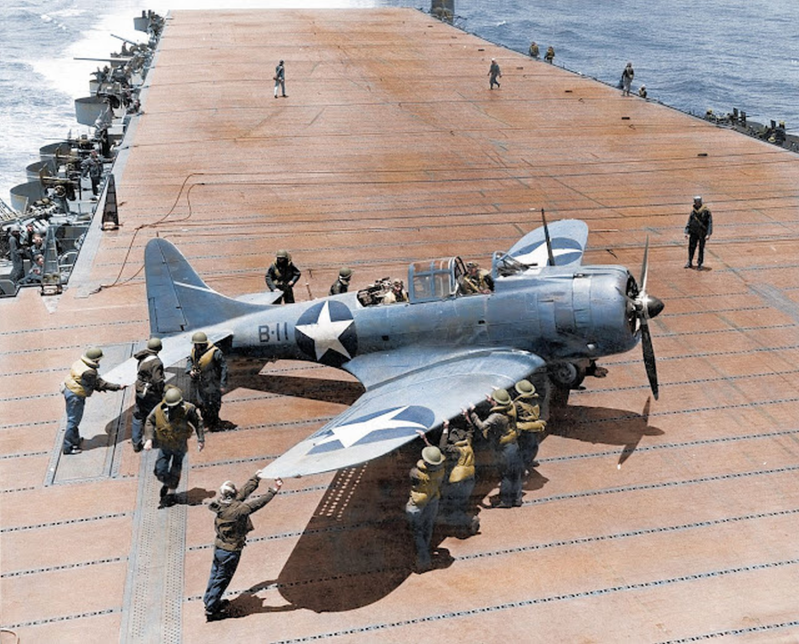
A US Navy Douglas SBD-3 Dauntless of bombing squadron VB-8 on the deck of the aircraft carrier USS Hornet (CV-8) during the Battle of Midway in 1942.
Battle of the Atlantic (September 1939 - May 1945) - US Navy convoys protected merchant ships transporting vital supplies from the US to Europe, fending off German U-boat attacks in the longest and largest naval campaign of The Second World War.
Operation Overlord (June 6, 1944) - The US Navy provided amphibious landing craft and support to the Allied invasion of Normandy, France, the largest amphibious invasion in history.
Battle of Leyte Gulf (October 23-26, 1944) - The US Navy decisively defeated the Japanese Navy in the Philippines, destroying three aircraft carriers, three battleships, and numerous other vessels.
Battle of Iwo Jima (February 19 - March 26, 1945) - The US Navy supported the Marines in a grueling battle to capture the Japanese-held island of Iwo Jima, a critical airfield halfway between Japan and the Marianas.
Battle of Okinawa (April 1 - June 22, 1945) - The US Navy and Marines launched an invasion of the Japanese island of Okinawa, the largest amphibious assault of the Pacific War, resulting in heavy casualties on both sides.
Operation Iceberg (March 26 - July 2, 1945) - The US Navy led the invasion of the Japanese home island of Okinawa, using a massive fleet of warships and landing craft to provide support for US Army and Marine units.
US troops make their first strike on the Japanese Home Islands at Iwo Jima in 1945. The battle lasted for five weeks and contained some of the most bloody and brutal fighting of the whole war.
https://www.vintag.es/2018/05/pacific-war-colorized-photos.html
Conclusion
The US Navy was instrumental in the battles of the Pacific, using innovative tactics and technology to secure key victories against Japan.
The US Navy's contribution in the Atlantic was also significant, playing a critical role in the defeat of Germany through convoy protection, amphibious landings, and strategic bombing campaigns.
Overall, the US Navy's role in the Second World War helped to establish the United States as a global superpower and shaped the post-war world order.
Representatives of the Empire of Japan stand aboard USS Missouri prior to signing of the Instrument of Surrender.
Public Domain
USA C-2719 (Color) Surrender of Japan, Tokyo Bay, 2 September 1945 (navy.mil)
